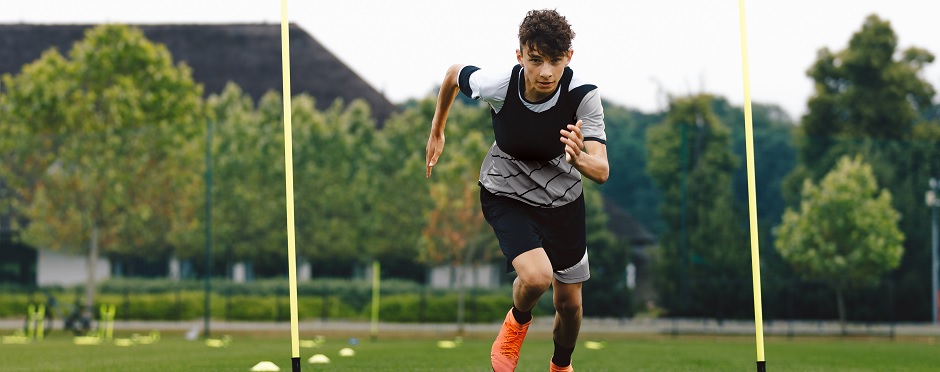
Strength Training Considerations for Youth Athletes
Leave a CommentAs young kids’ participation in sports increases, strength training in youth athletes also continues to be seen more frequently. Strength is an important part of daily life as well as for participation in sports. Strength training at a young age can be beneficial for coordination, flexibility, and bone density as well as general health. We know that preventative exercise (prehabilitation) focuses on strengthening muscle groups that are overused in specific sports (i.e. rotator cuff for overhead throwing athletes) and it may reduce overuse injuries in these athletes. Increasing incidence of strength training may lead to questions about safety and how much training children should be doing for their age and level.
Considerations & How to Start
- Weight training programs should be individualized
- Each session should include a warm up and a cool down, 5-10 minutes of each
- Training sessions should be supervised by a parent or coach
- Focus on form initially, do not use weights, to make sure each exercise is being performed through full range properly
- Start with larger muscle group exercises before smaller muscle exercises
- For each training session, perform 6-8 exercises for the major muscle groups that you are focusing on that day (examples of major muscle groups include: chest, shoulders, back, legs, abs, and low back. You do not need to do each group during each session)
- You want to make sure you are balancing upper and lower body as well as exercises for the front and back of the body
- Start with 1-2 sets of 6-15 repetitions per set for youth strength training programs
- Select a weight so that 10-15 repetitions can be completed with fatigue but not muscle failure. If they are unable to complete 10 repetitions with proper form, then the resistance should be reduced.
- Rest 1- 3 minutes between sets
- Train 2-3 days per week, nonconsecutive days
- To progress the program, participants need to correctly demonstrate proper technique before progressing number of sets or resistance.
- Keep it fun!
What to Avoid
- In general, children should not use maximal loads
- American academy of Pediatrics does not endorse using max lifts for youth strength training and one rep max lifts are not recommended until skeletal maturity.1
- Strength training does not equal “weightlifting” or “body building,” the goal of a strength training program is technique rather than trying to build big muscles
Safety
A well supervised strength training program has no greater inherent risk than participation in any other youth sport or activity.2 Injury in case reports are attributed to equipment misuse, lifting improper weight, using improper technique, or training without qualified adult supervision.1 Prior to starting a strength training program, make sure the program is designed for the individual and that they will be properly supervised; you can also check with your pediatrician prior to beginning a program.
Overall Benefits of Youth Strength Training
- Strengthen a child’s bones
- Help promote healthy blood pressure
- Help a child maintain a healthy weight
- Improve a child’s confidence and self esteem
- Increase a child’s strength and endurance
- Help protect a child’s muscles and joints from sports related injuries
- May help improve child’s performance in sports
- Develop proper techniques that the child can continue to use as they age
- Promote healthy lifestyle for their future
A strength training program comes with a variety of health benefits, but with any new fitness program, be sure to consult with your youth athlete’s doctor prior to starting. You can also reach out to your nearest Athletico to discuss strengthening with a physical therapist. Get started by scheduling a Free Assessment today. Free Assessments are available in-clinic and virtually through our Telehealth platform.
The Athletico blog is an educational resource written by Athletico employees. Athletico bloggers are licensed professionals who abide by the code of ethics outlined by their respective professional associations. The content published in blog posts represents the opinion of the individual author based on their expertise and experience. The content provided in this blog is for informational purposes only, does not constitute medical advice and should not be relied on for making personal health decisions.
References:
1. Dahab KS, McCambridge TM. Strength training in children and adolescents: raising the bar for young athletes?. Sports Health. 2009;1(3):223-226. doi:10.1177/1941738109334215
2. Faigenbaum AD, Kraemer WJ, Cahill, et al. Youth resistance training: Position statement paper and literature review. J Strength Cond Res. 1996;18:62
